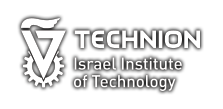
Assoc. Prof. Maytal Caspary Toroker
03/03/2021
Mar 3 2021 | Acs Applied Materials & Interfaces
Dipole-Induced Raman Enhancement Using Noncovalent Azobenzene-Functionalized Self-Assembled Monolayers on Graphene Terraces
By: Brill, AR (Brill, Adam R.), Biswas, S (Biswas, Santu) Toroker, MC (Toroker, Maytal Caspary), de Ruiter, G (de Ruiter, Graham) Koren, E (Koren, Elad)
Abstract
Graphene is a promising material in the field of interface science, especially for noncovalent functionalization, sensing, and for applications in catalysis and nanoelectronics. The noncovalent self-assembly of aromatic molecules on graphene promotes electronic coupling through pi-pi interactions that allows for quenching of the fluorescence of adsorbent molecules and the enhancement of their Raman spectra via graphene-enhanced Raman spectroscopy (GERS). Although recent work has explored the Raman enhancement on mono- and bilayer graphene, the layer dependence of both electronic phenomena (i.e., fluorescence quenching and Raman enhancement) has largely remained underexplored. Similarly, the effect of near-surface molecular dipoles on GERS has sparsely been examined. In this work, we employ self-assembled monolayers of azobenzene-decorated triazatriangulene molecules (AzoTATA) on graphene terraces to examine the effect of switchable molecular dipoles on the GERS effect, which occurs as a function of azobenzene photoisomerization. Furthermore, using empirical and computational methods, we present a systematic study for deriving the mechanism of GERS enhancement and fluorescence quenching on graphene terraces.


